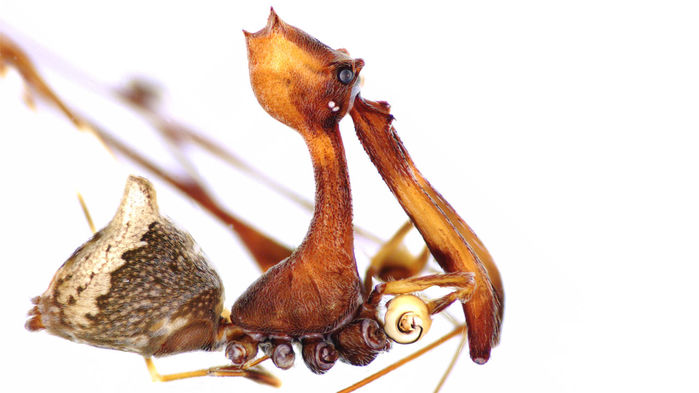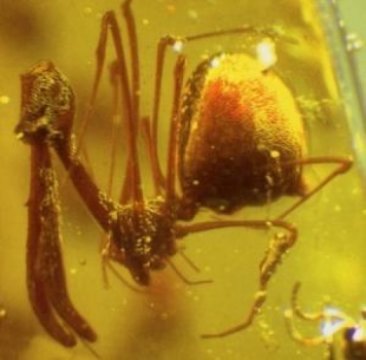 It’s alive! Pelican spiders, once thought dead, have made a reappearance.
It’s alive! Pelican spiders, once thought dead, have made a reappearance.
The discovery sounds like something out of a Hannibal Lecter story. Why? Because of the spiders' special diet.
The first pelican spider was first discovered in 1854, dead in fossilized amber. Amber is a resin that is a secretion from trees, and when it becomes a fossil, it traps all sorts of things within its sticky confines. And these get preserved for millions of years. The amber can be dated to the era of the dinosaurs.
The Live Pelican Spider
When the pelican spiders were recently spotted in Madagascar, South Africa, and Australia, they sent scientists into a flurry of excitement as a species once thought dead was moving before their eyes.
Arachnologists (or spider scientists) Hannah Wood and Nikolaj Scharff examined, analyzed, and classified 18 new species of pelican spiders belonging to the Eriauchenius and Madagascarchaea genera. Wood named one spider species after her daughter and some other new species after local Malagasy royalty.
The spiders themselves are very unique. They are extremely small, approximately the size of a single grain of rice. What makes them stand out, however, is the jaws that they possess. Elongated and curved like a pelican's, they are made to hunt efficiently as nighttime predators. As of today, there are 26 different varieties of pelican spiders, 18 of which have just been discovered.
For Their Diet...

These spiders are known for eating... other spiders! They are extremely dangerous to spiders smaller than them and have been called cannibals.
Because of their choice of food and their method of attack, these spiders have been nicknamed “assassin spiders”. They hunt at night, slowly tracking lines of leftover silk. They come upon their prey, another weaker, smaller spider, and creep up for the hunt. Snap! Suddenly, they go in for the kill and grab the other spider with their fangs.
But the other spider fights back, trying to use its own venom. Luckily, the pelican spider has a natural defense to this. They use their long trap of a jaw to keep the fighting spider away from their body, not letting it get close enough to bite them. They kill the smaller spider and then prepare for their next meal.
Cannibalism is common in a few species around the world. However, these pelican spiders aren’t true cannibals since they don’t prey on their own kind. Scientist Hannah Wood ran experiments with groups of pelican spiders, but not one spider came close to eating another. They just formed small bubbles and stayed out of each other's way.
While they may sound scary, these spiders, like all other living things, are part of a thriving ecosystem. Fascinating, isn't it!
Sources: National Geographic, NYTimes, Smithsonian, Livescience, SI.edu








